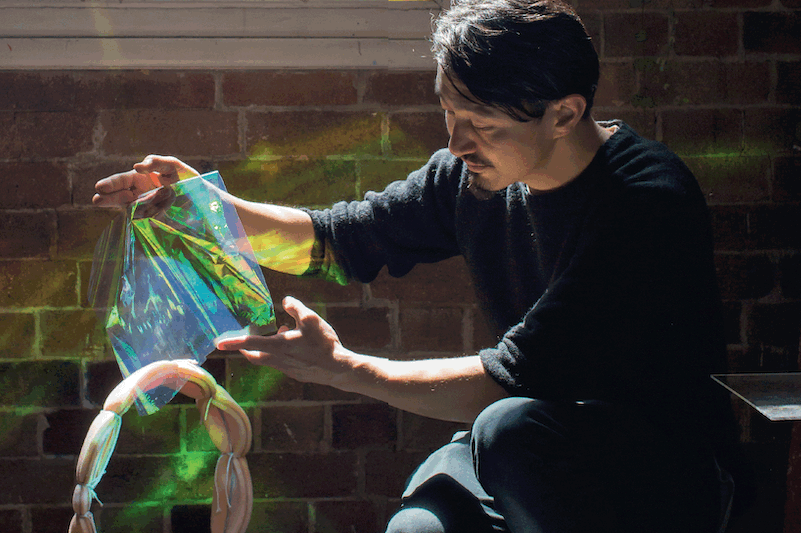Koji Ryui: Alchemist of the everyday
Koji Ryui flouts the rules of sculpture and installation with ethereal results.
Words: Rex Butler
Photography: Maja Baska
Some hip curator needs to put on a contemporary Australian sculpture survey – and soon. Sculpture is everywhere at the moment. From comparative old-schoolers like Mikala Dwyer and Hany Armanious to the fabulous recent show by Janet Burchill and Jennifer McCamley at Neon Parc, to the younger-generation Helen Grogan and Carly Fisher, to now Koji Ryui, who is presenting his sixth solo exhibition at Sarah Cottier Gallery this November.
What is it with sculpture at the moment? Actually, the paradox is that it’s sculpture after installation, sculpture that takes into account and goes beyond installation. Take Armanious, for example. His early work is grunge scatterpieces that do everything possible to avoid any formal description, judgement, categorisation. They’re anti-art or at least anti-sculpture, and this is indicated by the various pours, throws and, yes, scatters by which they’re made. But at a certain point he stops and decides once again to make art. And this is figured precisely by the upside-down wineglasses on which he mounts his hotmelts, which contain them, mould them, restrain them, put them back on a plinth (even if they face away from each other).
It’s got to be an act of homage when Ryui presses an upside-down wineglass over the head of one of the two clay figurines stuffed into a yellow polyethelene bag with a smiley face on it that make up Have a Nice Day (2014). It’s a gesture that operates a bit like a thought bubble or conversely a Maxwell Smart-like cone of silence, but mainly it’s an elegant formalising device. It somehow etherealises the slumped bag of unfired clay, making it seem weightless and transparent, rising up into the sky like a steeple. It takes the base materiality of the work and forces us to see it through an aesthetic lens. Now, like a sculpture on a plinth, the work seems to declare its own internal space, the part of the room that belongs specifically to it, as opposed to the unbounded ambience of installation.
And all of Ryui’s work is like this. It might be an entanglement of poly-coated wire on a white cane stand, it might be a heterogeneous bunch of objects on a galvanised steel stand, it might just be wooden shelves themselves – but there’s always a distinction between us and it, and it always seeks to articulate (and make us become aware of) the reasons why it is the way it is. Ryui suggests that the work Lumpen (2016), which was shown earlier this year in the Sarah Cottier Gallery’s group exhibition Another Green World, and which consists of a green candle wax cast of the head of Pericles atop a bent steel pipe, will be the basis of his upcoming show. If we think about it, with Pericles’ head on one side and the length of the bent steel on the other, it’s a beautiful example of contrapposto. The point is not only how the great general remains so calm and inwardly focussed with his eyes closed, but how the work remains so precariously balanced. And precariously balanced forever.
That’s sculpture – and its rules and pleasures are different from those of installation. They’re not physical, but – for want of a better word – cerebral, like an inverted wine glass being put over our head. Or even – used with all precautions, or at least with invisible quote marks around it – emotional, a little like Ryui’s making a series of works with the subtitle Emoticon. We can begin to have feelings about these works, almost (but not quite) in the sense that Ryui himself speaks of “empathy” and the projection of “one’s psyche, perceptions and expectations onto inanimate objects.” If the big lesson of ACCA’s recent show Painting. More Painting is that painting is currently going through a post-post-medium moment, then similarly a whole generation of young and not-so-young sculptors is rediscovering the possibilities of sculpture after (but also absorbing the lessons of) installation.
This article was originally published in Art Collector issue 78, OCT-DEC 2016.









